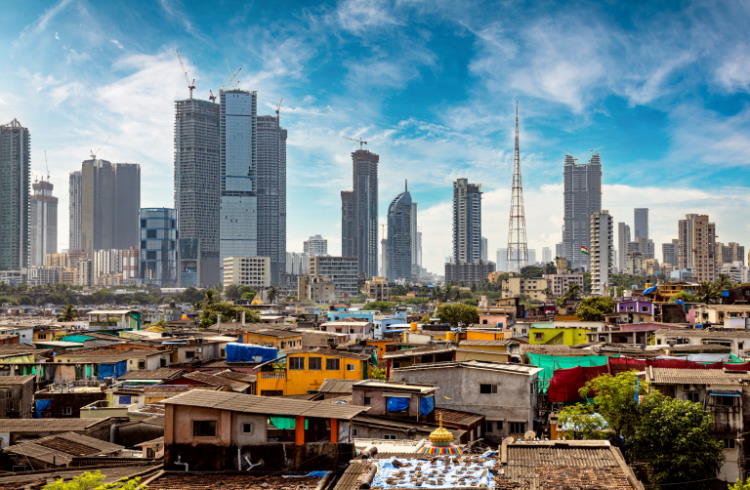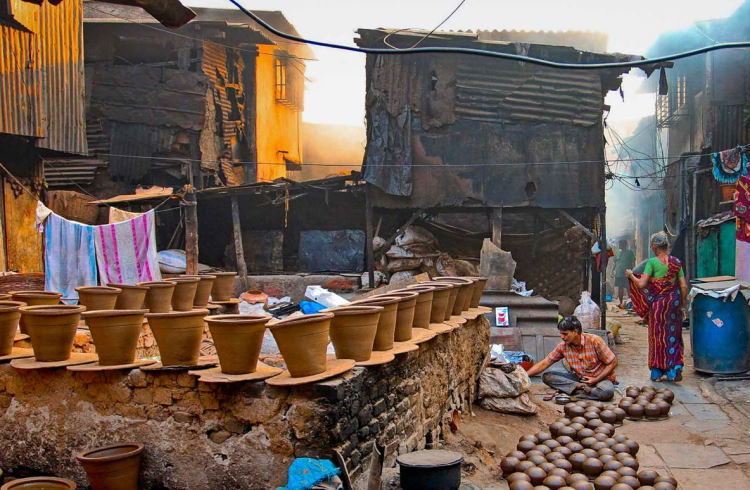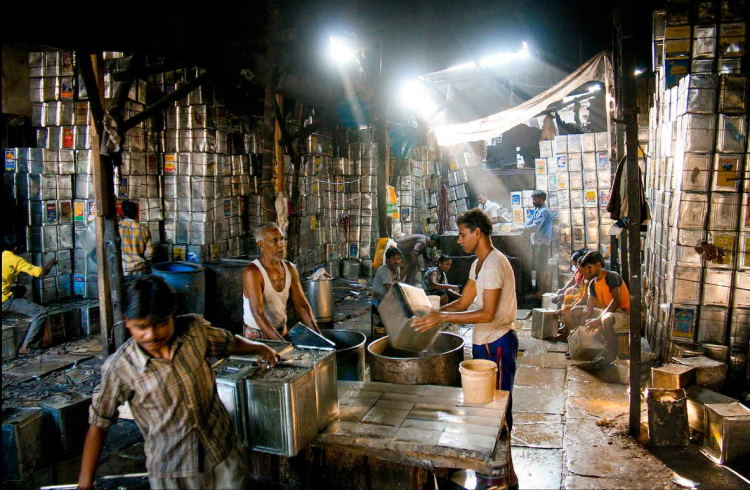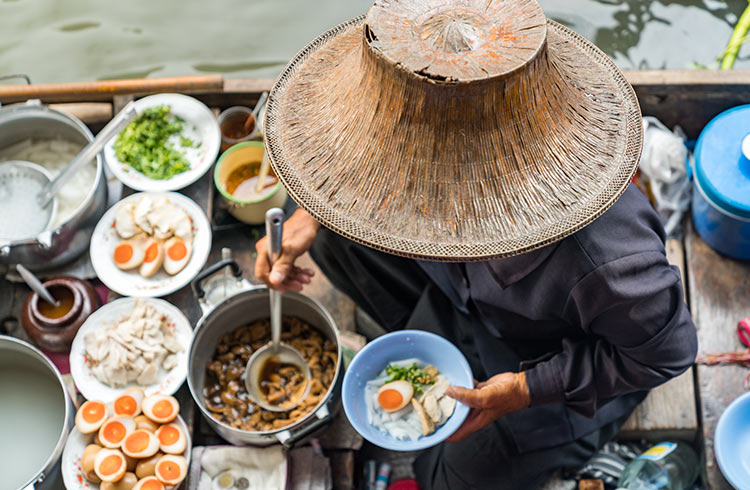What Are the Ethics Around Visiting Slums When You Travel?
Visiting dense, poverty-stricken areas of a destination can show travelers a side of the culture they wouldn’t otherwise see – and it’s often much more positive than they might expect. But how can travelers do so safely, and without exploiting those who live there?
 Photo © Getty Images / cookelma
Photo © Getty Images / cookelma
I walked along the edges of the train tracks, which cut through dense urban sprawl. On either side of the tracks were makeshift stands selling used electronics, food, and other basic necessities. Twice a day, the train passed through and people hopped on and off the rail to transport them to and from the city center. This makeshift market was abuzz with people and businesses and ran parallel through Kibera, a densely packed human settlement in southern Nairobi at the epicenter of the ebb and flow of human life.
Slums are a reality in many large cities around the world. Packed into compact urban spaces are houses, people, schools, businesses, and centers of worship. A dense and sometimes seemingly impenetrable entity to outsiders, slums are home to some of the city’s poorest residents. While commonly associated with poverty, crime, and deteriorating infrastructure, slums are also brimming with life, stories, and innovation, and reveal a unique side to a city that typical tourist spots don’t show.
How to find ethical slum-tourism experiences
If you’re curious to experience the hidden face of Mumbai, Nairobi, Rio de Janeiro, or another city, it’s not advisable to adventure into a slum on your own, but there are a number of safe and ethical ways to visit these dense urban settlements.
Slum tourism can be controversial and complex. To avoid experiences and tours that exploit communities living in slums, ask yourself what your motivation is for visiting. Are you curious to learn more and get in touch with a very real side to a city, or are you doing research for a project? Krishna Pujari, the co-founder of Reality Tours in Mumbai, recommends asking yourself three questions when finding the right tour for you: “Who is running the tours, how are they doing it, and why are they doing it?”
Krishna and his business partner, Chris Way, first imagined the concept of tours through Dharavi in 2005 when slum tourism was an unheard-of concept in Mumbai. “When we first came up with the plan, my friends laughed at us,” commented Krishna. “’ You guys are crazy,’ they said. ‘Who wants to go in the slum? If you go into Dharavi, you won’t come out.’” On his first visit to Dharavi, Krishna was surprised. The slum he had grown up hearing about wasn’t unsafe. Instead, he was struck by the entrepreneurship and commercial activity abuzz in the area.

“I wanted to show the positive side of Dharavi. Yes, there are electricity wires hanging, a lack of sanitation, and poor working conditions. But there is a strong sense of community. We want to show this to people and change the mindset they have. This is exactly why Reality Tours started. And to raise funds for projects in Dharavi.”
In my experience, I’ve found a few elements that are positive indicators of ethical tours: a photo ban to protect the privacy of the community; highlighting small businesses to showcase entrepreneurship as opposed to degradation; and experiences run by community members themselves to elevate local voices. A little research can go a long way to familiarize yourself with the company well and look out for potential scams.
Recommended slum-tourism experiences
I’ve found some great companies that are careful to provide experiences with dignity but also directly benefit small businesses and entrepreneurs living and operating within the slums. Word of mouth and Airbnb Experiences have both been fantastic resources to help me find educational, empowering inner-city and slum walking tours. Read reviews and tour details to learn more about the authenticity of the experience and where your money is going. Below are a few recommended slum experiences for the curious and conscious traveler.
Reality Tours (Mumbai): from Shantaram to Slumdog Millionaire, Dharavi – a heaving slum in the center of Mumbai – has gained quite some notoriety in popular media. If you’re curious to learn more about one of the world’s largest slums, where nearly a million people live in just over .75mi2 (2km2), Reality Tours runs immersive and educational walking tours that are deeply rooted in benefiting the local community. Photos are banned during the tour, the experience is led by members of the community, and 80% of the profits from tours go back to the community through Reality Gives, the company’s NGO that supports educational programs in Dharavi.
“Access to quality education is one of the biggest challenges in India,” noted Krishna. “So, our funds go to help that.” Beyond education, Reality Tours also supports employment and families in Dharavi.
You can choose between a morning or afternoon tour and will be met by your guide at Mahim Railway Station. Over the next few hours, you’ll walk through narrow alleys, past bright-hued buildings, and into the energetic depths of Dharavi. You’ll catch views over the stretches of tin roofs and pass by Hindu temples and long mats where Muslim residents worship for afternoon prayer. You’ll visit numerous businesses in Dharavi, including a women-run poppadum entity, a recycling business, and a leather tanning company. The tour ends at Reality Gives, the NGO branch of Reality Tours, where you can learn about the educational innovation happening within Dharavi.

If you’re curious to learn more, add on a lunch at a family home, street art tour, or pottery-making class. Reality Tours also operates in Delhi and Agra and is growing to rural areas of India, dedicated to telling authentic stories about the real side of India, while directly supporting the communities it works in.
Kibera Empowerment Tour (Nairobi): after making several trips to Nairobi, I was curious to experience a part of the city I had previously studied in university but hadn’t seen firsthand: Kibera, the largest urban slum on the African continent that originated as a settlement in the forest on the outskirts of Nairobi, where Nubian soldiers returning from service with the British colonial army were allocated plots of land.
Among many tours of Kibera on Airbnb Experiences, I ultimately chose Moses’ Empowerment Tour, as I admired his story and how it shaped his personally led walking tours. He was born and raised in Kibera, is a current Kibera resident, and works tirelessly as an entrepreneur to tell the story of his home through the lens of his personal experience and other entrepreneurs in Kibera. “I show Kibera from the insiders’ point of view,” commented Moses. “I bring to you all the community-led projects that are meant to uplift people from devastating poverty.”
After I met Moses outside a shopping center on the outskirts of Kibera, we navigated across bumpy, mud pathways and past small wooden stands selling produce and made our way to Moses’ humble, one-room home, where guests got a glance at typical living conditions in the slum and learn about the complex makeup of this dynamic urban space.
After we left his home, we continued a few-hour exploration of Kibera. Moses’ walking tour highlights a number of businesses within Kibera, including stops at a metal and jewelry welding shop, a bakery, and a center to support HIV-positive women. “By visiting Kibera with me,” said Moses, “guests are able to understand how locals lead their lives and what entrepreneurs are doing to turn things around.”
Comuna 13 (Medellin): Comuna 13 walking tour in Medellin is a fantastic walking tour through some of the Colombian city’s most harrowed landmarks that played a role in its dark history with the drug cartel. The sites on the tour have been reinvented as positive infrastructure in the community, such as schools or government buildings. Beyond memorializing the history, the walking tour highlights the reinvention of Medellin as a vibrant city rich in innovation.
Even if you might be initially unsure of tours through slums – I certainly was at first – don’t discount all experiences. While it is a complex topic and there are certainly slum tours to avoid, ethical experiences are mutually beneficial for both parties. Slum experiences done right have the power to tell the stories of marginalized communities and provide a sense of dignity rather than shame to their livelihood, while also directly impacting residents with employment and community development projects. And as travelers, we get to learn about communities and livelihoods we otherwise wouldn’t be exposed to, while witnessing the direct impact tourism dollars can have when invested in hyper-local, community endeavors.
Related articles
Simple and flexible travel insurance
You can buy at home or while traveling, and claim online from anywhere in the world. With 150+ adventure activities covered and 24/7 emergency assistance.
Get a quote


No Comments